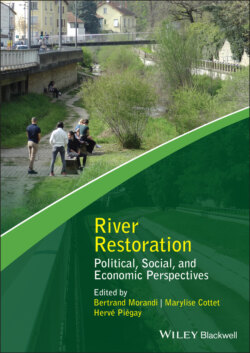Читать книгу River Restoration - Группа авторов - Страница 25
1.4.1.3 Practices supposed to guide the values associated with rivers
ОглавлениеAlthough landscape perceptions are often at the heart of studies relating to human–river interactions, a significant part of the literature also focuses on the river‐based activities that individuals engage in. These studies are often based on the idea that practices influence perceptions of the river, and therefore perceptions of restoration. In particular, a study on several urban rivers in the United Kingdom by Tunstall et al. (2000) showed that while most residents evaluate restoration projects very positively, particularly because of better access to the riverbanks and more recreational opportunities, some people are more nuanced. For example, anglers may denounce the degradation of fish resources following restoration, both in quantity and quality. Restoration projects may also create opportunities to renew practices between residents and their river, especially recreational ones, and increase the value they assign to it (e.g. Loomis 2002). Studies often show that the easier access provided by restoration projects contributes to intensifying or even creating new activities and attachments to rivers (e.g. Westling et al. 2014). These studies show that the diversity of links established between residents and rivers forges diverse expectations with regard to restoration actions. They also demonstrate that a restoration project will first be a political project, before being a technical one. This political project implies discussing both the diversity of links to the river and the diversity of expectations when defining restoration objectives (Wohl et al. 2005; Baker et al. 2014).
